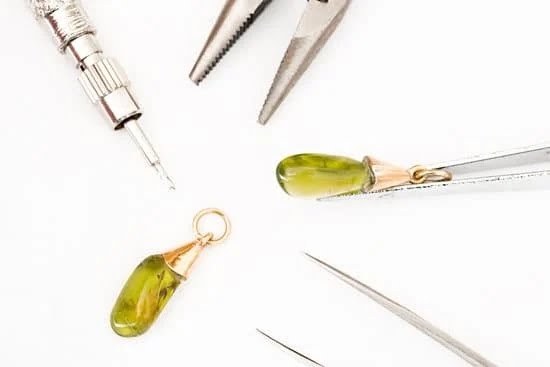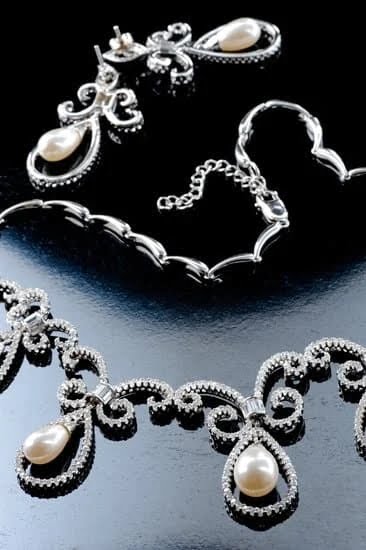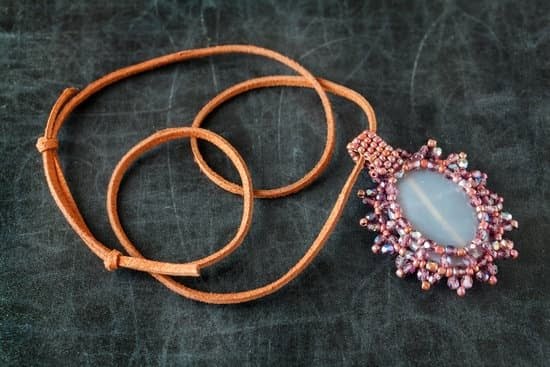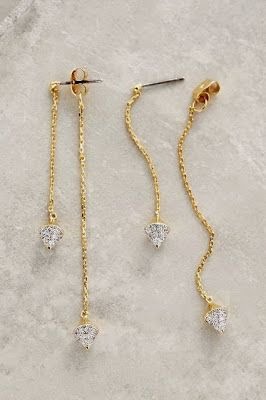Introduction
Maintaining jewelry, from rings and necklaces to earrings and other pieces, is an essential aspect of keeping our most treasured items radiant for years to come. With proper care and storage, jewelry can stand the test of time and be passed down as cherished family keepsakes. In this article, you’ll learn how to keep jewelry shiny and prevent signs of tarnish or wear overyears.
Steps for Cleaning Jewelry:
1. Before you start cleaning your jewelry, make sure you protect any other surfaces it may come in contact with while being cleaned; use a soft cloth or towel over counters or sinks.
2. Gently wipe the surface of the jewelry with a microfiber cloth; if there is dirt build-up on the piece let warm water run over it.
3. If dirt still persists on hard to remove areas like engravings or crevices use a soft toothbrush dip into mild soap bath with warm water and gently massage across the affected area (be sure not to use abrasive toothpaste).
4. Rinse off excess residue from jewelry when finished scrubbing it by washing again under briefly running water and pat dry using a soft cloth or towel.
5. To give your jewelry that extra glimmer buff each piece lightly with a polishing cloth – but be sure not to rub too hard or fast! This will help avoid scratching delicate settings and surfaces. Finally, store all pieces in a dry sealed container away from light exposure and direct heat sources such as windows or direct sun rays which can result in discoloration of gemstones/metals over time.
Identifying Jewelry Types and Basic Metal Cleaning Tips
When it comes to keeping jewelry shiny, the type of metal you have will influence how best to take care of it. The most common metals used in jewelry are gold, silver, and platinum. All three metals require a bit different treatment when cleaning.
Gold is the most popular metal used in jewelry and can vary in color as well as karat (purity) value. If a piece is marked 14k or higher, then it should be cleaned with warm soapy water using a very soft cloth or brush. As an alternative you may use a commercial gold cleaner; however this may leave streaks or discoloration on the piece depending on the type of polish used. Silver is also popular for its affordability and bright white sheen that has the potential to tarnish over time from prolonged exposure to oxygen and moisture. To clean silver jewelry, select products that are specifically designated for polishing it such as anticlastic cleaners or silver wipes; never use soap and water or other items labeled for gold. Lastly, platinum is the rarest of the precious metals and must be cared for properly because if exposed to certain chemicals like chlorine or detergents, it can discolor permanently. A simple mixture of mild dishwashing liquid and water is all you need along with a soft cloth, followed by thorough rinsing with lukewarm clean water will do wonders to keep a piece looking new again!
Special Cleaning Procedures for Certain Metals
While proper general care is the best way to ensure your jewelry stays shiny, some precious and semi-precious metals require special consideration. Silver can oxidize over time, leading it to discolor or tarnish. However, silver jewelry can easily be polished with a soft cloth and a mild silver cleaner. For gold pieces, use warm (not hot) soapy water, a soft toothbrush, and a gentle shampoo if needed; this should remove any dirt, oils or sweat residue that may have built up on the jewelry. Certain metals such as platinum require more frequent professional cleaning in order to retain their original shine and luster. Additionally, pearl or opal jewelry must be cleaned with a damp cloth in order to retain its shine; never put these types of jewelry in water as they may become damaged. Finally, gemstones such raspberry tourmalines are porous and should be stored away from humidity or extremes of temperature in order to maintain their sparkle.
Professional Polishing and Buffing Techniques
If you want to keep your jewelry bright and shiny, professional polishing and buffing techniques are the best way to do it. Polishing is done by rubbing a soft cloth, such as cotton or microfiber, over the surface. This removes dirt and grime from the piece. Buffing uses a rotary device to apply abrasive material directly to the metal surface of the jewelry. It leaves behind a smooth finish that gives a beautiful high-gloss effect, similar to that of a brand-new piece of jewelry. After either technique has been completed, use a soft dry cloth to remove any remaining debris, wax or product residue from polishing and buffing. Finally, use a clean brush with warm soapy water to gently wipe down each piece before drying them off with a lint-free cloth. Doing this regularly will help keep your jewelry looking like new for years to come!
Protective Measures to Reduce Wear and Tear
To keep jewelry shiny, the best preventive measure is to take good care of it. This means being careful when wearing and storing jewelry, removing it before any strenuous activity (such as swimming or exercising) and having it professionally cleaned at least twice a year. To reduce scratches and tarnish, it’s also important to store jewelry separately and never leave it in direct sunlight. A soft cloth or chamois should be used to wipe away dust after each use. When washing jewelry with soap, warm water should be used and drying should be done gently with a soft cloth or paper towel. If silver polish is needed, use only a mild solution designed specifically for that metal. Lastly, apply certain waxes available from most jewelers to protect precious metals from oxidation and discoloration caused by exposure to air pollutants.
Alternatives to Household Items for Jewelry Care
For those looking to care for their jewelry without relying on household items, there are a few options available. Many of these options are more gentle than common DIY methods and will help keep jewelry shiny for a long time.
Jewelry-specific polish: Jeweler’s wax is one option for cleaning and polishing jewelry. This can be purchased in most jewelry stores or online and comes in a variety of formulations that are designed to protect the metal from tarnish or rust. A slightly damp cloth is then used to buff the wax until the piece returns to its original shine.
Jewelry cleaning solution: An ultrasonic cleaner can also be used on jewelry with gemstones to clean off dirt, oils and grime build-up in crevasses. Ultrasonic cleaners come with a variety of solutions specifically designed for different types of materials such as gold, silver, platinum, and even pearls and diamonds. The cleaner creates tiny vibrations that help get rid of dirt while leaving the jewelry shiny.
Professional Jeweler: The best way to make sure that your jewelry maintains its luster is by having it cleaned professionally on a regular basis by an experienced jeweler who specialize in caring for gems hereinafter expensive metals. They have the knowledge and experience needed to safely restore the look and shine of special items without damaging them, so don’t hesitate if you think this would be helpful
Common Misconceptions about Jewelry Care and Maintenance
Many people believe that keeping jewelry clean and shiny is difficult and time-consuming. This misconception may originate from the fact that jewelry can be very fragile and seemingly complicated to care for. While it’s true that certain pieces require special care, general maintenance for most jewelry should be fairly simple. Consumers can use a few basic techniques to keep their beloved pieces of adornment sparkling – without fear of damaging them!
The first step to proper jewelry care is to regularly clean your jewelry. Use a soft cloth or brush and gently remove debris from in between links on chains or crevices in gems. Polish with mild soap and warm water, make sure not to soak the pieces as this can cause weakening of precious metals and stones; instead, rinse the piece off quickly after cleaning. Additionally, consumers should avoid using harsh chemicals such as bleach or chlorine when cleaning their jewelry as these agents are too abrasive and can potentially cause damage.
In addition to regular cleaning, it’s important to store your jewelry properly when not wearing it; this will go a long way in preventing wear and tear on individual pieces as well as helping increase their lifespan. Store jewelry in separate compartments or containers, preferably lined with an anti-tarnish lining – a lining made from materials such as cotton, felt or velvet which absorbs moisture and helps protect delicate gemstones from scratches or dulling due to contact with other jewels stored together. Finally try protective cases for more expensive pieces; cases are also useful if you plan on travelling with your jewelry as they secure each item safely within its own individual compartment, protecting it against knocks or accidental damage caused by objects passing through airport scanners etc.
Tips for Keeping Jewelry Safe and Organized
Maintaining jewelry in good condition requires a little bit of extra care. The following tips will help you keep your jewelry looking its best:
1.Store jewelry in an organized way. It’s important to store pieces separately, placing them in padded boxes or small compartments so that they don’t chip or scratch one another.
2.Avoid contact with water and chemicals such as chlorine, detergents, and perfumes. This can damage the surface of the metal or cause stones to become loose and fall out.
3.Keep jewelry away from direct sunlight or extreme temperatures which can also damage the surface of metals and settings for gems and cause tarnishing. Placing pieces in airtight containers is also beneficial to prevent oxidation from taking place too quickly on silver pieces due to humidity changes in the environment.
4.Polish jewelry with a soft cloth to avoid damage from abrasive substances like steel wool or an overly harsh polishing compound which could end up removing surface finishes applied during manufacturing. Also make sure you inspect your items often for any signs of wear and tear, such as scratches, chips, or missing stones which need replacing before bigger problems arise down the road!
5.Regularly check clasps on necklaces and bracelets for tightness as this can determine how long a piece will last- especially with heavier items like pearl strands that have been strung onto thread thin silk strings over time! If necessary replace broken clasps with new ones to ensure they stay intact while wearing out in public or traveling internationally with you at all times!
Conclusion
Creating and sticking to a regular jewelry maintenance plan is the best way to keep jewelry looking glossy, new and shiny. Essential tasks in this plan include using professional cleaning services when necessary, repairing loose settings, examining gemstones for damage, and regularly polishing with chemical-free solutions. By following these steps on a regular basis, you can ensure your jewelry remains shiny and intact for many years to come. Additionally, never underestimate the importance of proper storage – storing jewelry properly is just as important as physically maintaining the pieces themselves. For instance, silver jewelry should be stored in an airtight container along with a desiccant like silica gel which prevents tarnish from forming over time. Finally, it is important to consult professional jewelers or dedicated jewelry cleaning service providers for advice or guidance on how to clean your jewels best. Adopting a consistent approach towards cleaning and maintaining your valuables will help them maintain their beauty for far longer than simply relying on occasional cleanings or lovingly neglecting them.

Welcome to my jewelry blog! My name is Sarah and I am the owner of this blog.
I love making jewelry and sharing my creations with others.
So whether you’re someone who loves wearing jewelry yourself or simply enjoys learning about it, be sure to check out my blog for insightful posts on everything related to this exciting topic!





